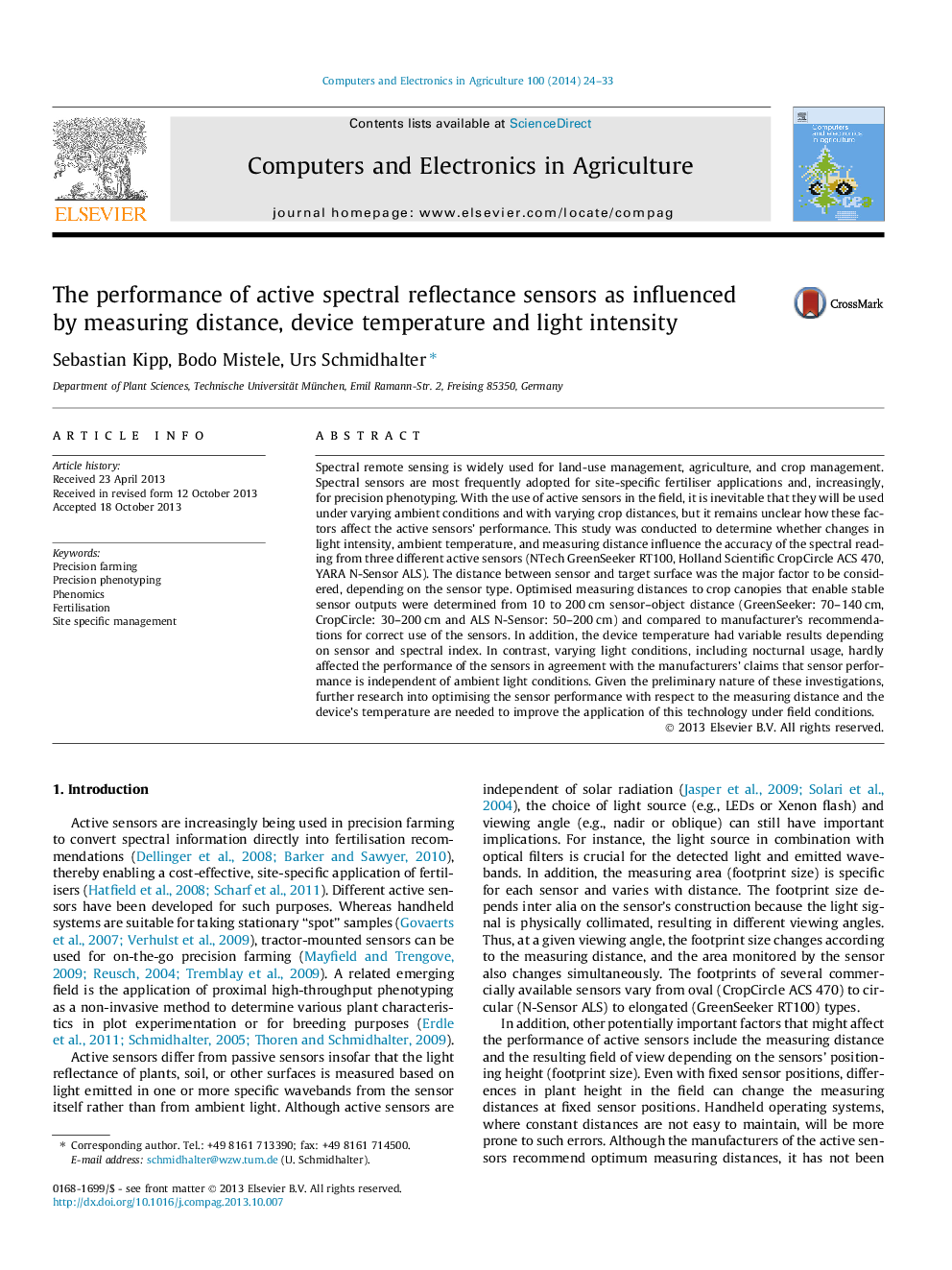| Article ID | Journal | Published Year | Pages | File Type |
|---|---|---|---|---|
| 6540902 | Computers and Electronics in Agriculture | 2014 | 10 Pages |
Abstract
Spectral remote sensing is widely used for land-use management, agriculture, and crop management. Spectral sensors are most frequently adopted for site-specific fertiliser applications and, increasingly, for precision phenotyping. With the use of active sensors in the field, it is inevitable that they will be used under varying ambient conditions and with varying crop distances, but it remains unclear how these factors affect the active sensors' performance. This study was conducted to determine whether changes in light intensity, ambient temperature, and measuring distance influence the accuracy of the spectral reading from three different active sensors (NTech GreenSeeker RT100, Holland Scientific CropCircle ACS 470, YARA N-Sensor ALS). The distance between sensor and target surface was the major factor to be considered, depending on the sensor type. Optimised measuring distances to crop canopies that enable stable sensor outputs were determined from 10 to 200Â cm sensor-object distance (GreenSeeker: 70-140Â cm, CropCircle: 30-200Â cm and ALS N-Sensor: 50-200Â cm) and compared to manufacturer's recommendations for correct use of the sensors. In addition, the device temperature had variable results depending on sensor and spectral index. In contrast, varying light conditions, including nocturnal usage, hardly affected the performance of the sensors in agreement with the manufacturers' claims that sensor performance is independent of ambient light conditions. Given the preliminary nature of these investigations, further research into optimising the sensor performance with respect to the measuring distance and the device's temperature are needed to improve the application of this technology under field conditions.
Related Topics
Physical Sciences and Engineering
Computer Science
Computer Science Applications
Authors
Sebastian Kipp, Bodo Mistele, Urs Schmidhalter,
